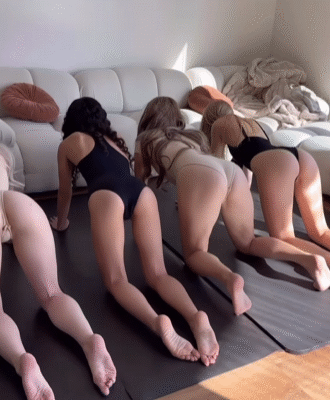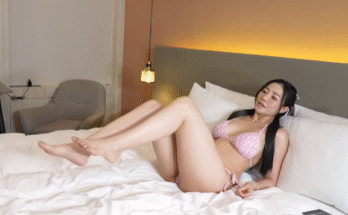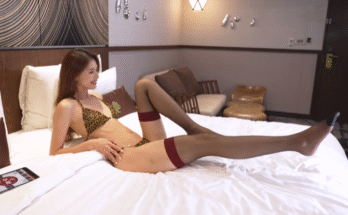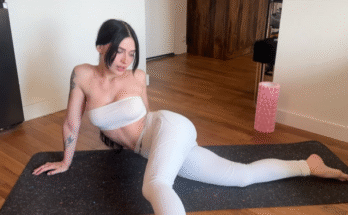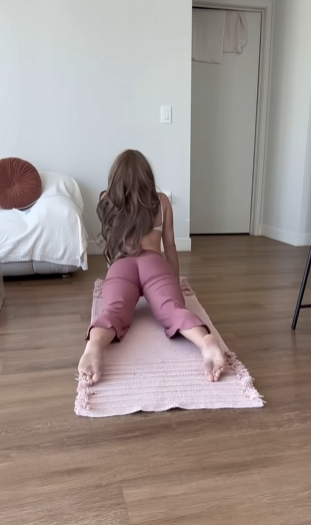
Yoga has always been celebrated as a practice that creates harmony between the body, mind, and breath. Among its many benefits, one of the most rewarding aspects is its ability to strengthen, stretch, and balance specific areas of the body through targeted sequences. A lower body focused yoga flow is designed to bring awareness and energy into the hips, hamstrings, quadriceps, calves, ankles, and even the toes—areas that often hold tension due to sitting for long periods, standing at work, or engaging in repetitive sports and exercises.
This flow is not only about flexibility. It emphasizes stability, grounding, and connection to the earth, as the legs and feet form the foundation for nearly every movement in yoga and daily life. By dedicating time to the lower body, practitioners improve balance, posture, and mobility while reducing stiffness and discomfort. Whether you are a seasoned yogi or a beginner, this sequence offers a supportive path to feeling both strong and spacious.
Why Focus on the Lower Body?
The lower body carries us through life. Every step, squat, or leap involves the coordinated work of muscles, joints, and ligaments. However, modern lifestyles often neglect mobility in this region:
- Sitting too much shortens the hip flexors and weakens the glutes.
- Standing for long hours tightens the calves and ankles.
- Running or cycling frequently may overwork the quadriceps and hamstrings while neglecting flexibility.
A yoga flow centered on the legs and hips creates balance. It counteracts stiffness with lengthening postures, builds strength in stabilizing muscles, and grounds the nervous system by emphasizing mindful breathing with rooted poses.
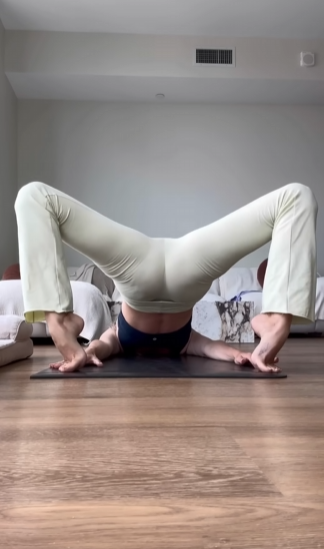
Preparing for the Flow
Before diving into a lower body focused yoga practice, it’s helpful to set an intention. This might be:
- “I want to release tightness in my hips.”
- “I am building strength in my legs.”
- “I want to feel more grounded.”
Warm up gently with a few minutes of cat-cow stretches, gentle forward folds, and ankle circles. This prepares the spine, joints, and muscles for deeper poses.
The Lower Body Focused Flow
Below is a step-by-step sequence that can be practiced at home. It takes about 30–40 minutes and can be adapted to your level.
1. Mountain Pose (Tadasana) – 1 minute
Stand tall at the top of your mat, feet hip-width apart, arms by your sides. Root down evenly through all four corners of the feet. Imagine energy traveling upward from the soles of your feet to the crown of your head. This pose sets the foundation for the entire flow and awakens awareness in the lower body.
2. Forward Fold (Uttanasana) – 5 deep breaths
From mountain pose, exhale and hinge at the hips to fold forward. Bend the knees slightly if needed. This posture stretches the hamstrings and calves while calming the mind.
3. Low Lunge (Anjaneyasana) – 5 breaths each side
Step your right foot back, lowering the knee to the mat. Keep the left knee stacked over the ankle. Sink the hips forward while lifting through the chest. This opens the hip flexors and quadriceps. Switch sides.
4. Warrior II (Virabhadrasana II) – 5 breaths each side
Step your feet wide apart. Turn your right foot outward and bend into your right knee, keeping it stacked above the ankle. Extend arms parallel to the floor. This strengthens the thighs, glutes, and calves while building balance. Switch sides.
5. Triangle Pose (Trikonasana) – 5 breaths each side
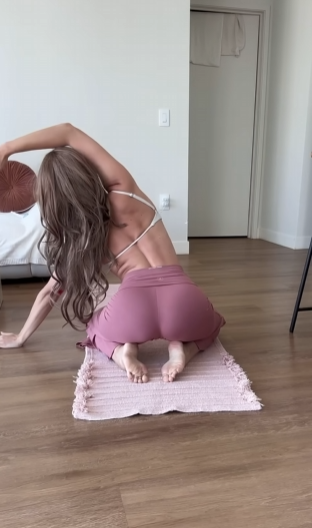
From Warrior II, straighten your front leg and extend forward, bringing your hand to your shin, block, or the floor. Lift the opposite arm toward the sky. Triangle deeply stretches the hamstrings, calves, and inner thighs while improving stability.
6. Chair Pose (Utkatasana) – 5–8 breaths
Stand tall, then bend your knees as if sitting into an invisible chair. Keep weight in your heels and lift your chest. Chair pose engages the quadriceps, glutes, and calves, creating strength and endurance.
7. Wide-Legged Forward Fold (Prasarita Padottanasana) – 5–8 breaths
Step feet wide apart and hinge forward at the hips, folding down with a long spine. This targets the hamstrings, calves, and inner thighs while calming the nervous system.
8. Garland Pose (Malasana) – 5–10 breaths
From standing, bring feet wider than hips and squat down, bringing palms together at the chest. Use your elbows to gently press knees apart. Malasana opens the hips, stretches the ankles, and strengthens the lower back and thighs.
9. Half Pigeon Pose (Eka Pada Rajakapotasana variation) – 5–8 breaths each side
From downward-facing dog, bring your right knee forward and place it behind your hands, extending the left leg back. Lower into a forward fold for a deep hip opener. This posture releases tension in the glutes and outer hips. Switch sides.
10. Seated Forward Fold (Paschimottanasana) – 5–10 breaths
Sit with legs extended forward, hinge from the hips, and reach toward your feet. This stretches the hamstrings and calves while encouraging relaxation.
11. Bridge Pose (Setu Bandhasana) – 5–8 breaths
Lie on your back, bend knees, and place feet hip-width apart. Press into your feet to lift hips. Bridge pose strengthens glutes, hamstrings, and lower back while stretching the hip flexors.
12. Supine Figure Four Stretch – 5–8 breaths each side
Lie on your back, cross the right ankle over the left thigh, and pull the left leg toward your chest. This gentle stretch releases the outer hips and glutes. Switch sides.
13. Final Relaxation (Savasana) – 5 minutes
Lie flat on your back, legs extended, arms at your sides. Allow the entire lower body to relax, releasing any tension left in the muscles. Breathe deeply and surrender to stillness.
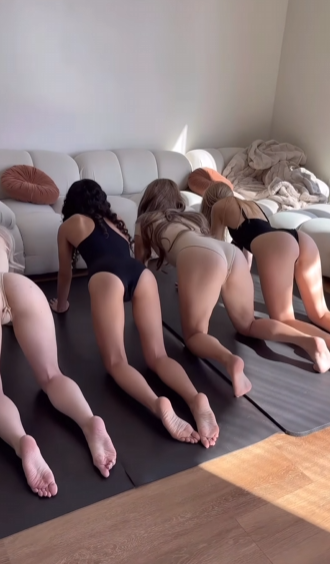
Benefits of This Flow
Practicing this sequence regularly supports both physical and mental well-being.
- Flexibility – Postures like forward folds and pigeon release tight hamstrings and hips.
- Strength – Warrior poses, chair, and bridge build muscle endurance in the legs and glutes.
- Balance & Stability – Triangle and mountain cultivate grounding and body awareness.
- Circulation – Movement stimulates blood flow, easing stiffness and fatigue.
- Stress Relief – Long-held stretches activate the parasympathetic nervous system, creating calm.
Tips for Success
- Use props: Yoga blocks or pillows can support the hips in pigeon pose or the hands in triangle.
- Modify as needed: Bend the knees slightly in forward folds if hamstrings are tight.
- Focus on breath: Deep, steady breathing helps muscles release more effectively.
- Practice consistently: Even 20 minutes a few times a week can bring noticeable results.
Closing Thoughts
A lower body focused yoga flow is more than a workout—it’s a journey into stability, grounding, and release. The legs and hips connect us to the earth; when they are strong and flexible, we feel both rooted and free. With consistent practice, you’ll notice improved mobility, reduced tension, and a deeper connection to your body.
Whether you are seeking relief from tight hamstrings, strength in your thighs, or simply a moment of mindful grounding, this flow offers a holistic way to honor and care for the foundation of your body. Roll out your mat, breathe deeply, and let your lower body guide you toward balance and strength.
